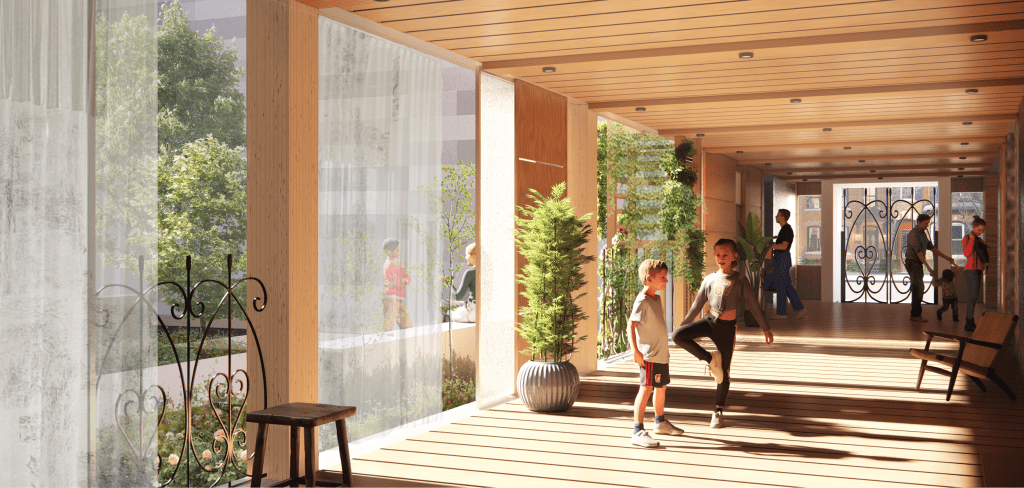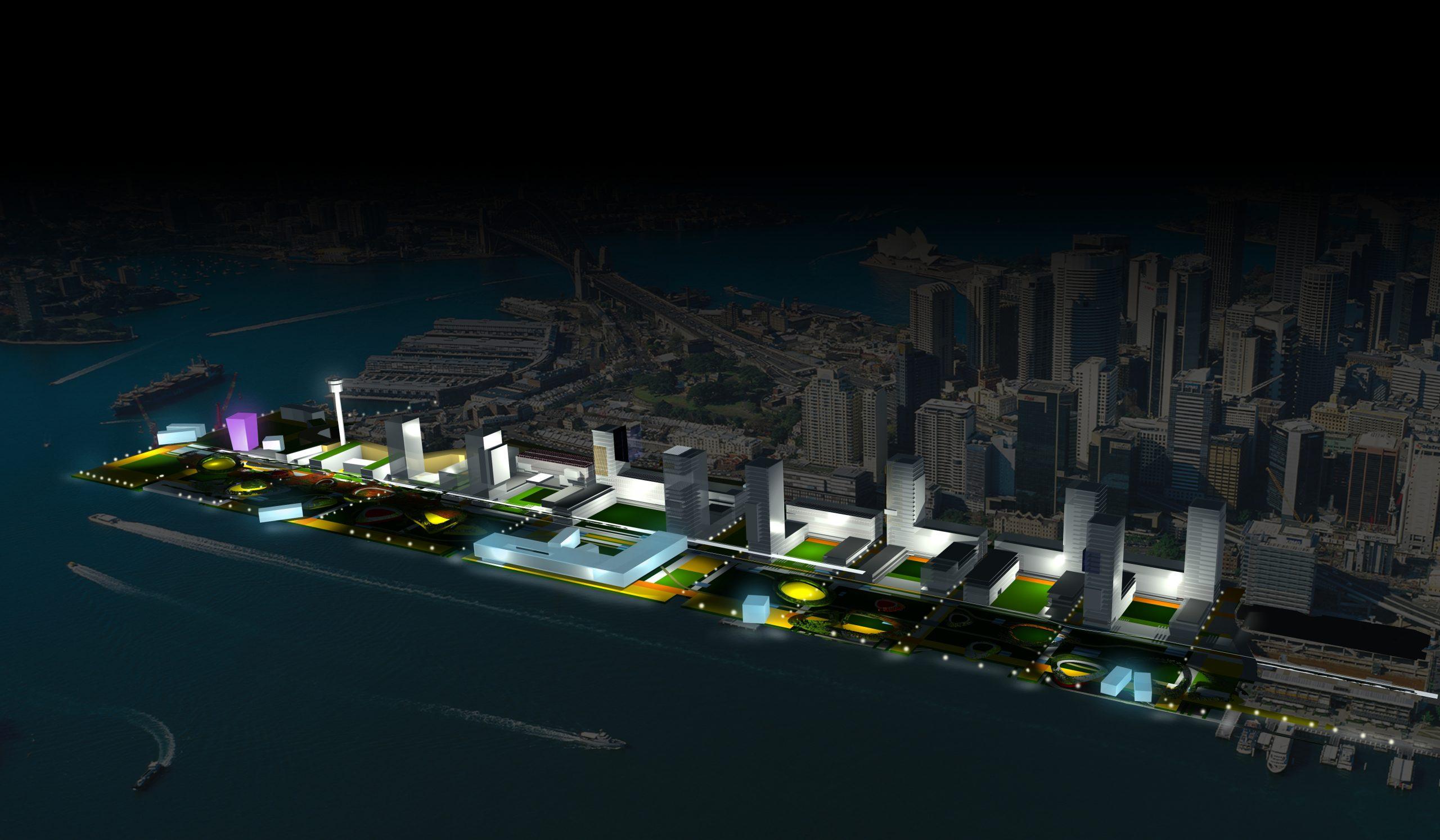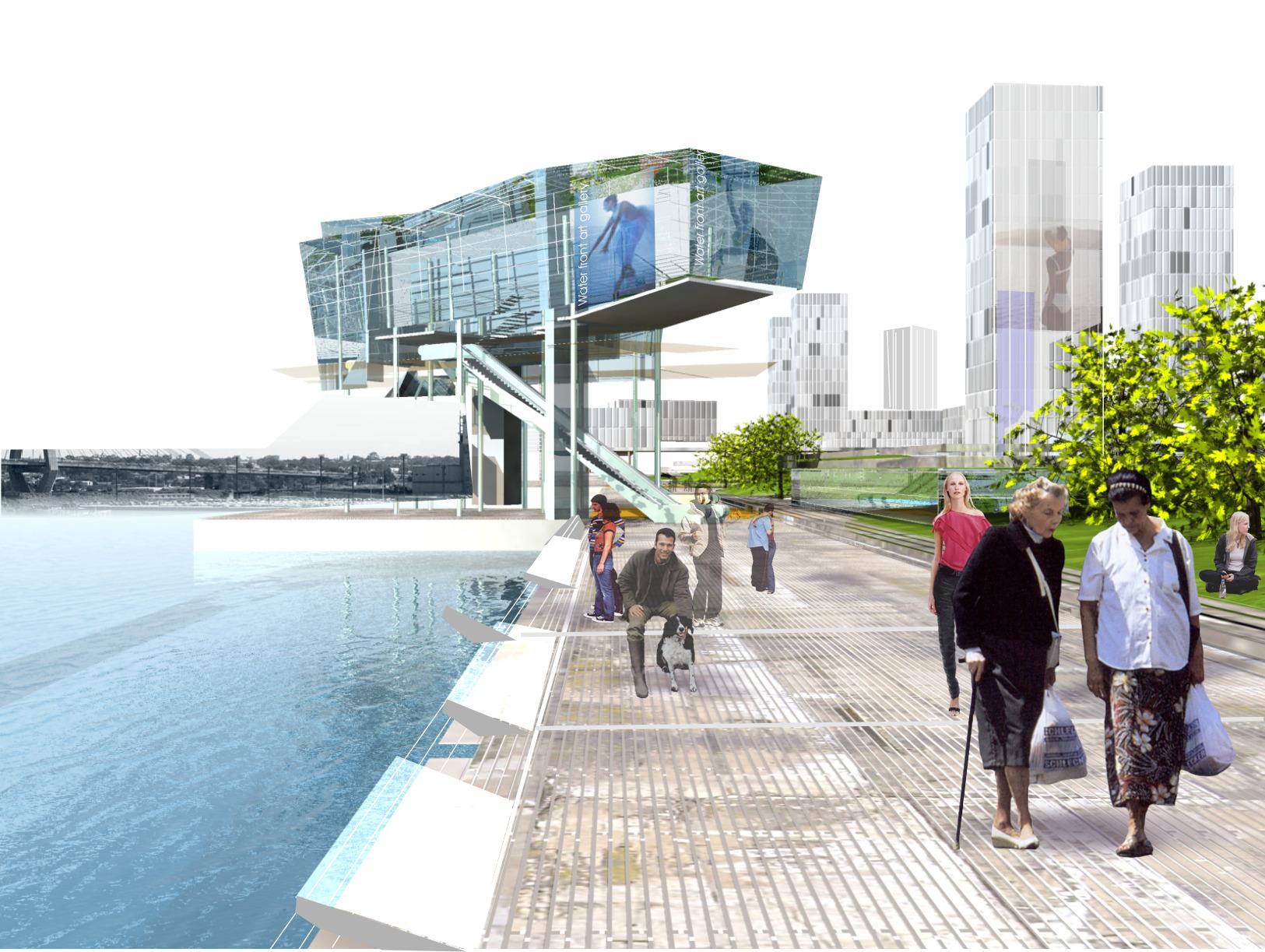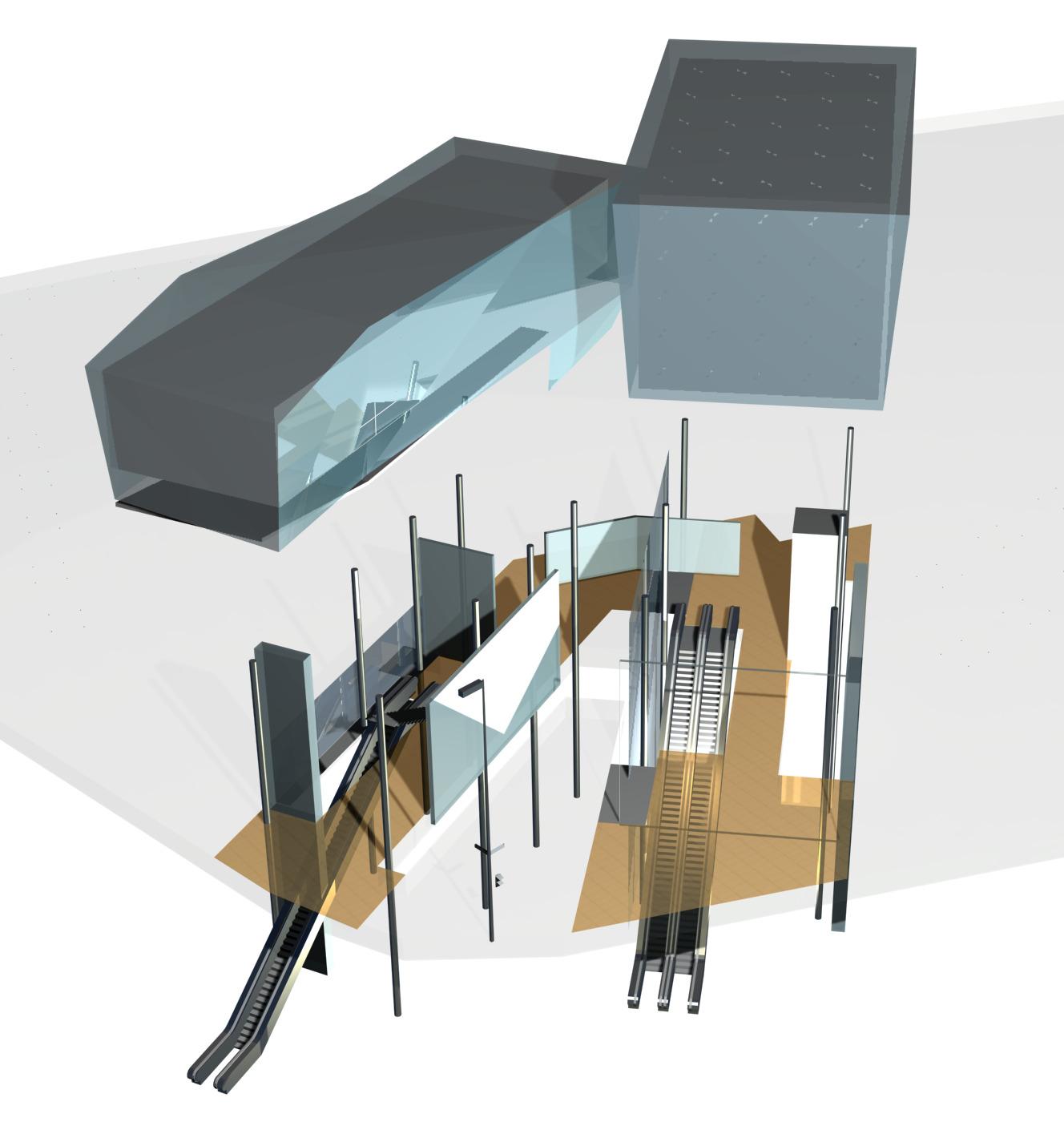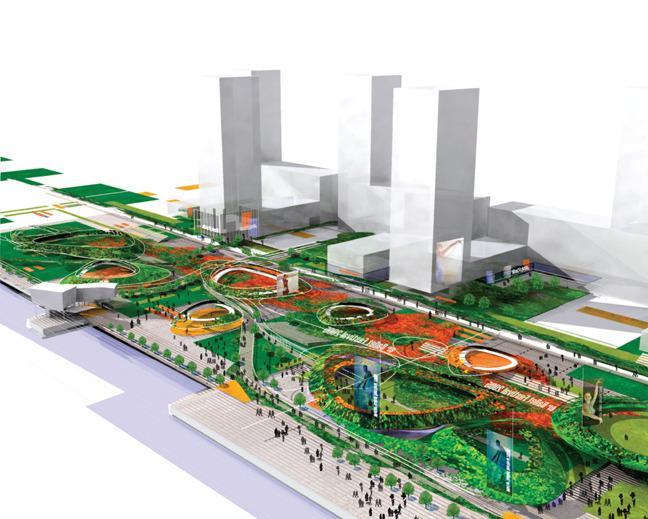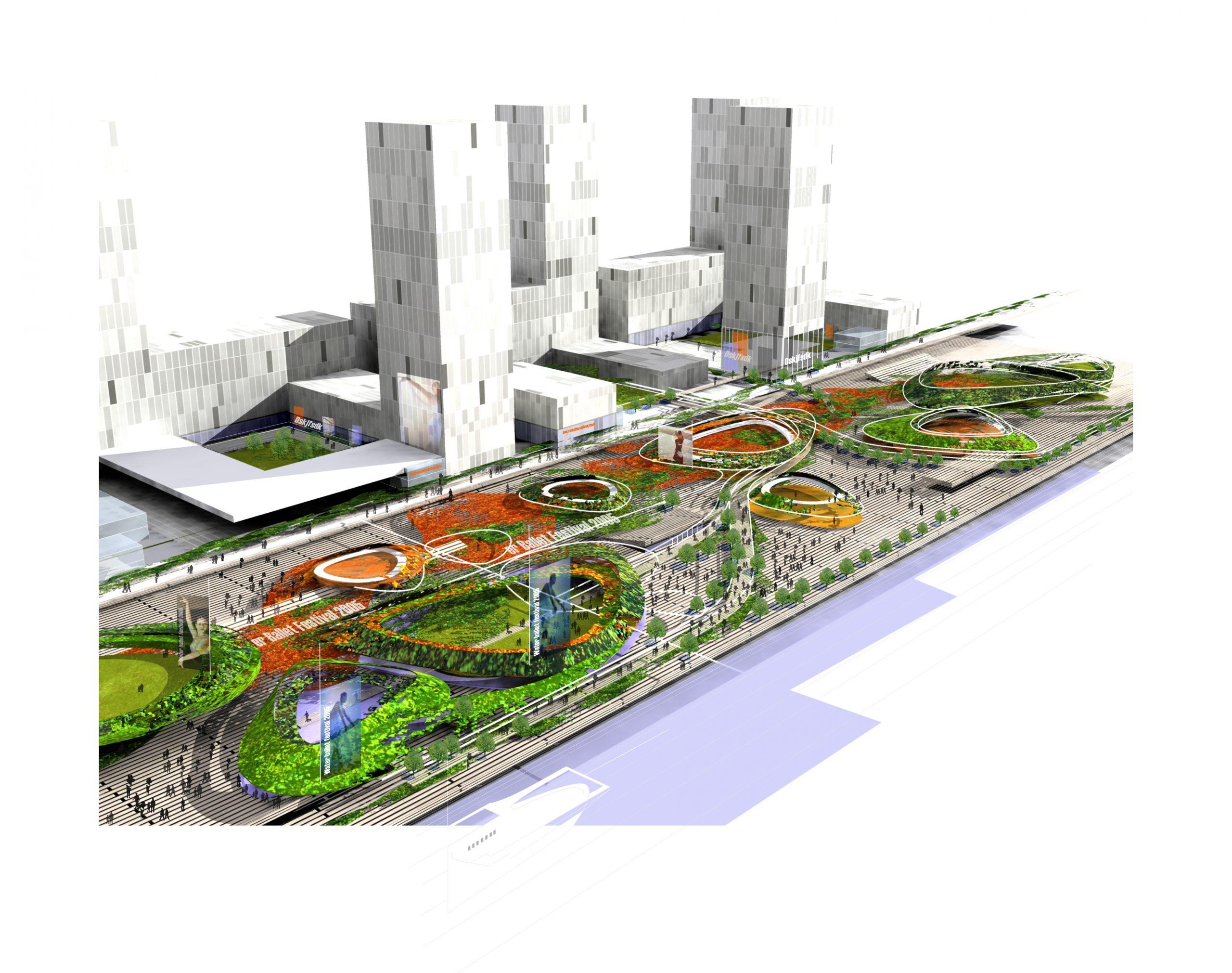East Darling Harbour, Sydney, Australia

The characteristics of this design are those that create and explore relationships between formerly separated elements. At its primary level, the city to waterfront break is repaired and reformatted by mixing the elements of built form and open space clearly set out as linear strata. At the next level, the relationship at each line of contact is initiated through tectonic devices of landscape and built elements – the line of Hickson Road, the line between open space and built form, the line between promontory and wharf, and the line between water and land. At a parallel level, the relationship of light is explored as the common denominator between night and day – how the special characteristics of the tectonic elements – eggs, mushrooms, currents, jets, built forms, courtyards – can transform the interpretation of the waterfront site to conform to the beacon’s power of attraction. The lower forms of the site become glowing beacons in complementary form to the light tower, while broad swaths of light create a horizontal sweep that encompass the site.
